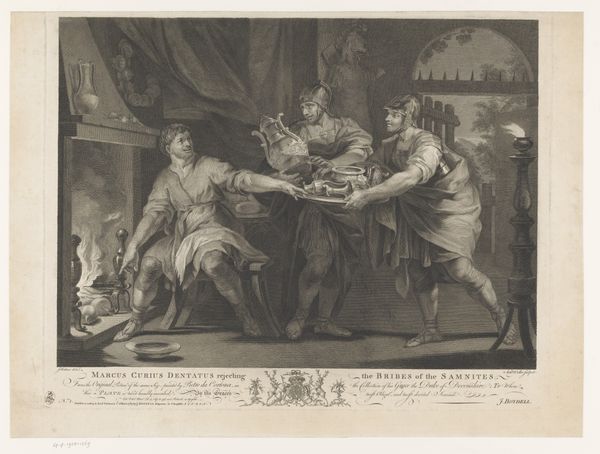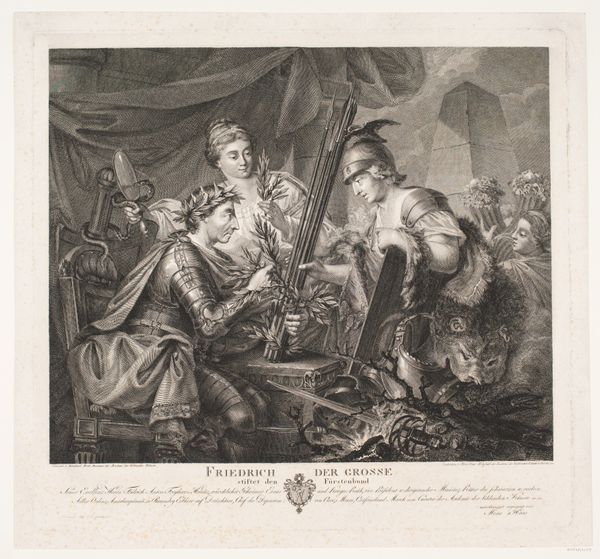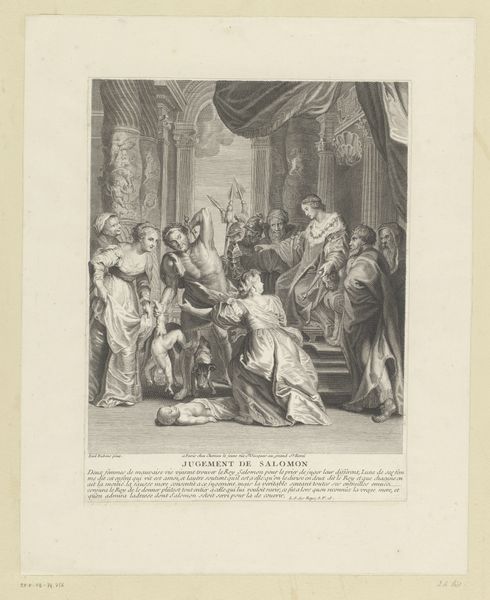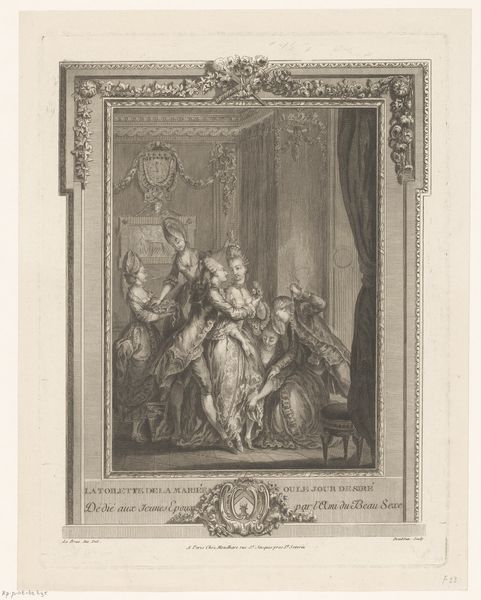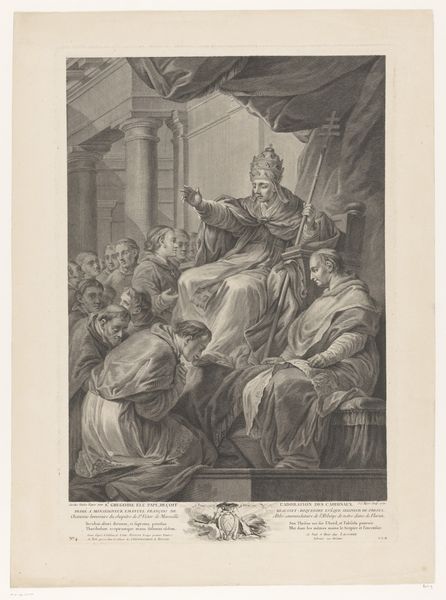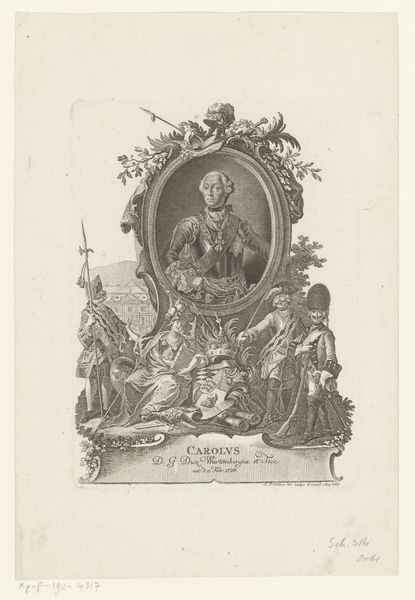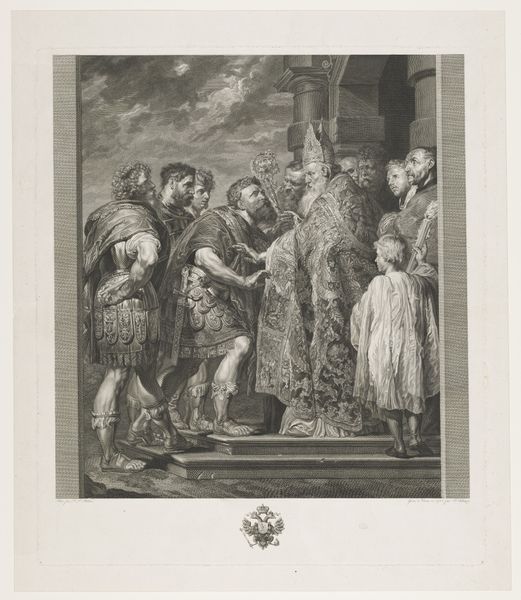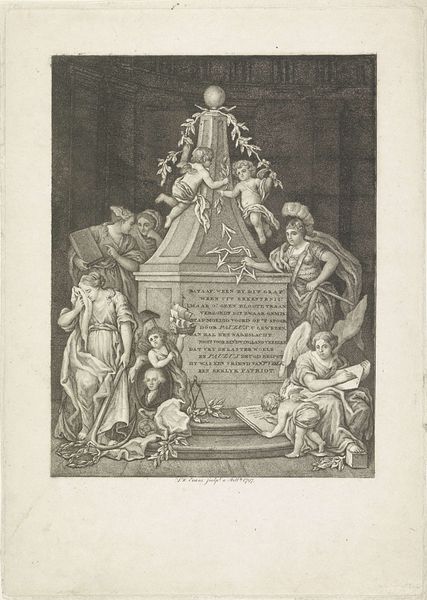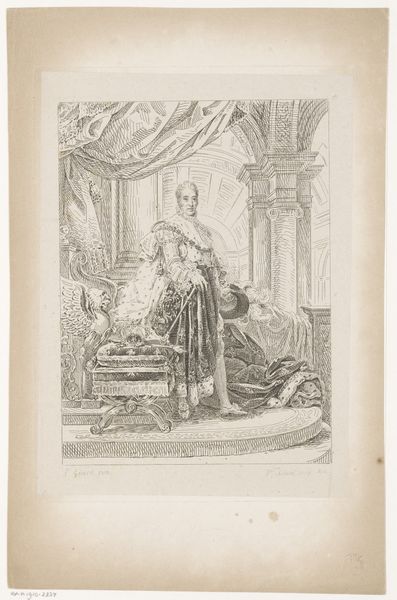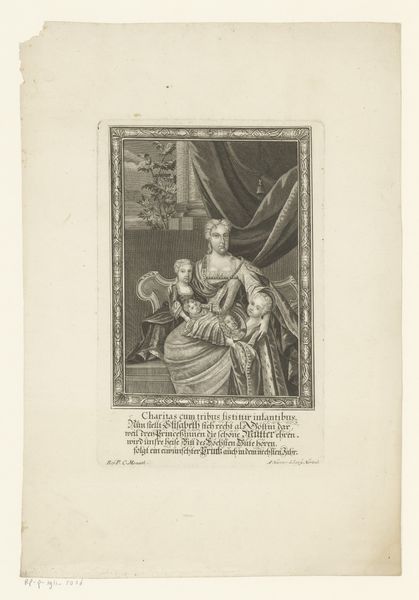
Dimensions: height 573 mm, width 482 mm
Copyright: Rijks Museum: Open Domain
Jakob Matthias Schmutzer rendered this print, "Mucius Scaevola before Lars Porsenna," with etching. At its heart lies the potent symbol of sacrifice. Mucius Scaevola, in a display of Roman courage, thrusts his hand into the flames, an act laden with meaning. Fire, often associated with purification and transformation, here becomes a testament to unwavering loyalty and defiance against tyranny. This motif of self-inflicted pain echoes through history. Consider the flagellants of the Middle Ages, who whipped themselves into frenzy, or even Christ's crucifixion, a symbol of ultimate sacrifice. These acts, though diverse in context, all tap into a primal understanding: that suffering can be a conduit for higher ideals. The burning hand resonates even today, resurfacing in modern protests. The self-immolation of monks during the Vietnam War carries the same emotional weight. What this image, and others like it, communicate is a deep, subconscious need to transcend, to demonstrate through suffering a commitment to a cause. This is the life of images: non-linear, cyclical, continuously evolving.
Comments
No comments
Be the first to comment and join the conversation on the ultimate creative platform.
